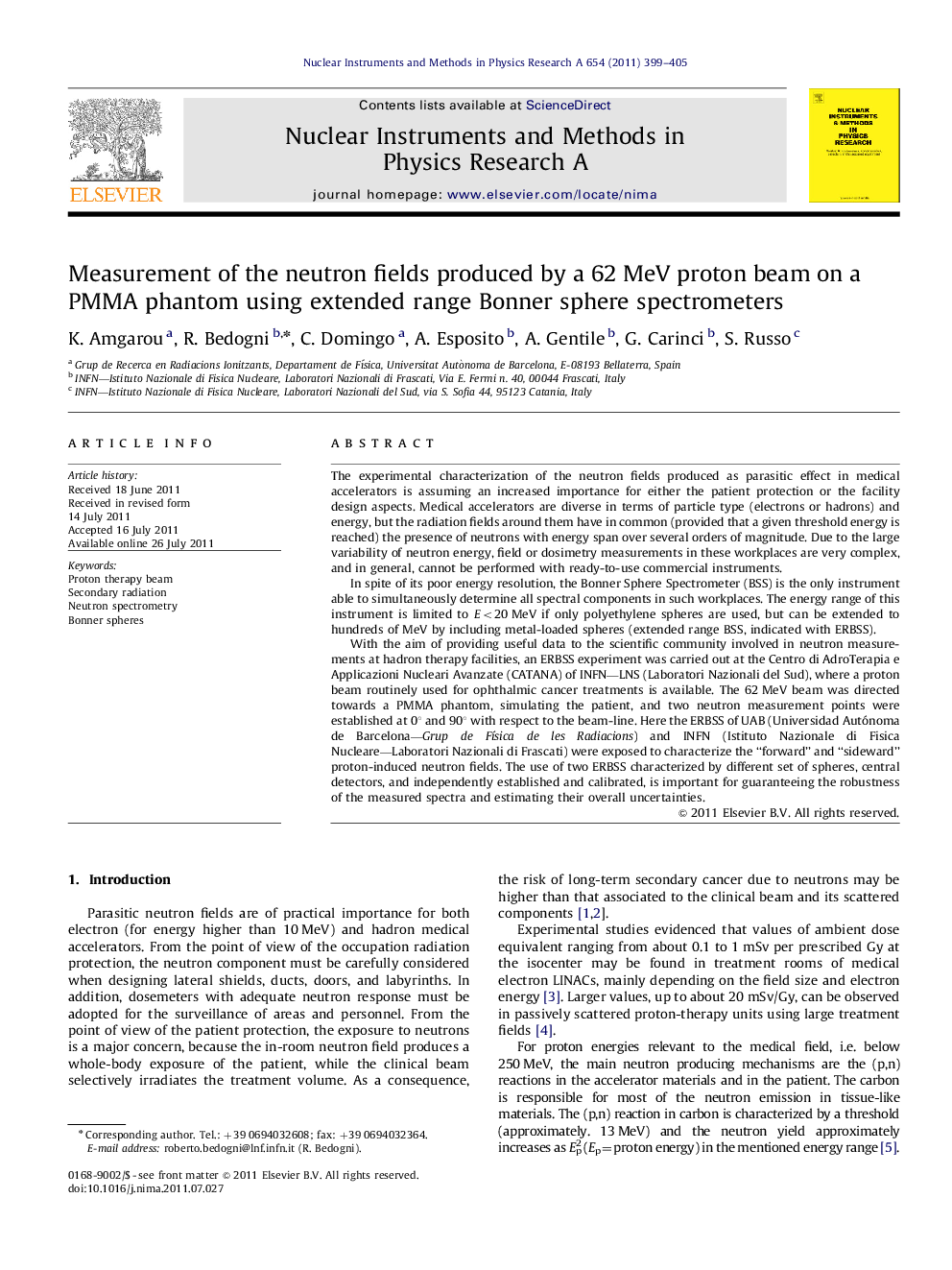| Article ID | Journal | Published Year | Pages | File Type |
|---|---|---|---|---|
| 1824272 | Nuclear Instruments and Methods in Physics Research Section A: Accelerators, Spectrometers, Detectors and Associated Equipment | 2011 | 7 Pages |
The experimental characterization of the neutron fields produced as parasitic effect in medical accelerators is assuming an increased importance for either the patient protection or the facility design aspects. Medical accelerators are diverse in terms of particle type (electrons or hadrons) and energy, but the radiation fields around them have in common (provided that a given threshold energy is reached) the presence of neutrons with energy span over several orders of magnitude. Due to the large variability of neutron energy, field or dosimetry measurements in these workplaces are very complex, and in general, cannot be performed with ready-to-use commercial instruments.In spite of its poor energy resolution, the Bonner Sphere Spectrometer (BSS) is the only instrument able to simultaneously determine all spectral components in such workplaces. The energy range of this instrument is limited to E<20 MeV if only polyethylene spheres are used, but can be extended to hundreds of MeV by including metal-loaded spheres (extended range BSS, indicated with ERBSS).With the aim of providing useful data to the scientific community involved in neutron measurements at hadron therapy facilities, an ERBSS experiment was carried out at the Centro di AdroTerapia e Applicazioni Nucleari Avanzate (CATANA) of INFN—LNS (Laboratori Nazionali del Sud), where a proton beam routinely used for ophthalmic cancer treatments is available. The 62 MeV beam was directed towards a PMMA phantom, simulating the patient, and two neutron measurement points were established at 0° and 90° with respect to the beam-line. Here the ERBSS of UAB (Universidad Autónoma de Barcelona—Grup de Física de les Radiacions) and INFN (Istituto Nazionale di Fisica Nucleare—Laboratori Nazionali di Frascati) were exposed to characterize the “forward” and “sideward” proton-induced neutron fields. The use of two ERBSS characterized by different set of spheres, central detectors, and independently established and calibrated, is important for guaranteeing the robustness of the measured spectra and estimating their overall uncertainties.
